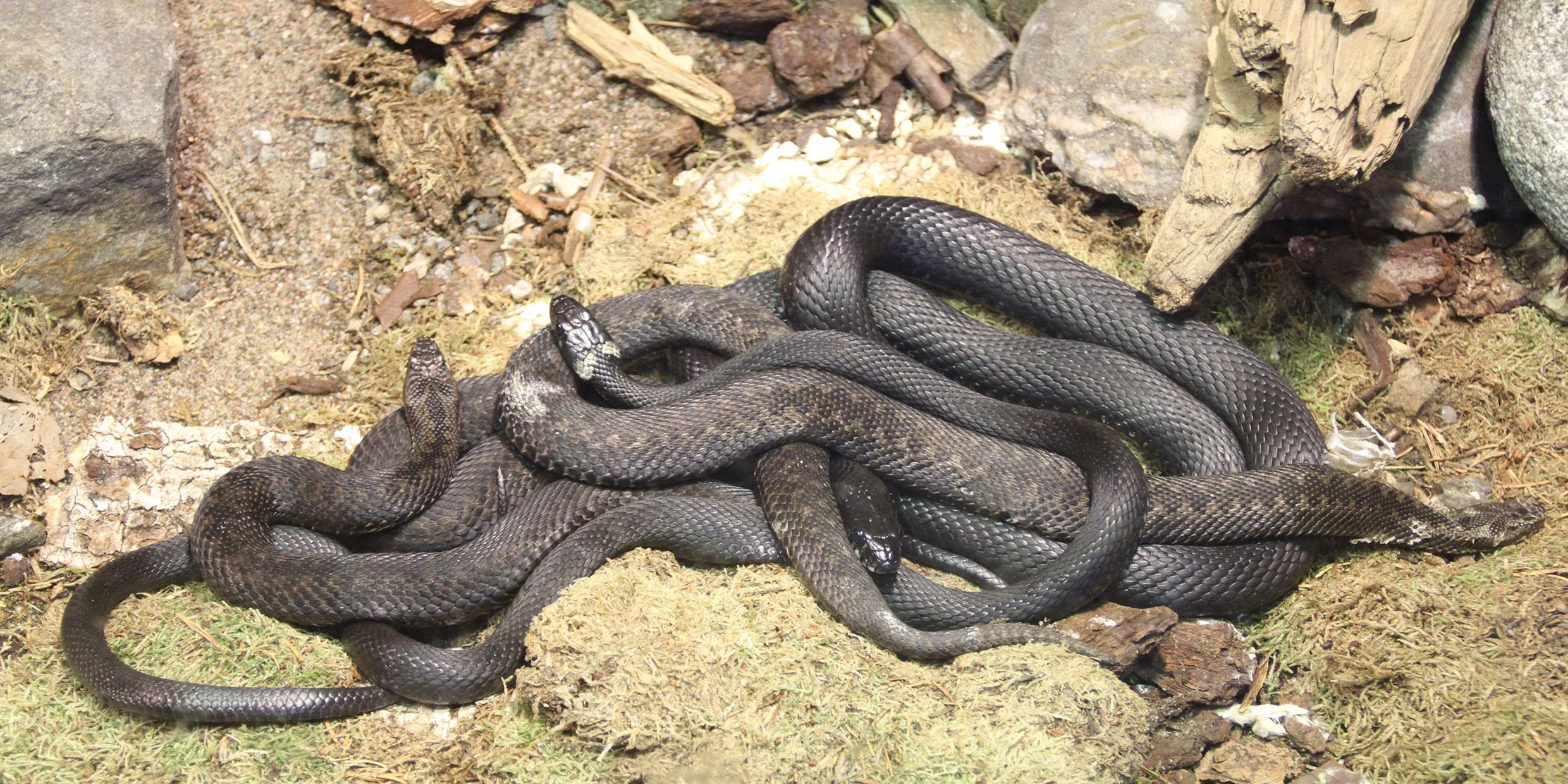Originally published 24 February 1992
It is time to present the Second Annual Gullible Gull Award for the most bizarre scientific research of the past year involving experimentation with animals.
Competition was intense. The British were strong contenders, skulking about in hedgerows doing odd experiments with badgers and cuckoos. As usual, Scandinavian zoologists spent the brief northern summer investigating the sex lives of reindeer and mosquitoes. Americans devised ingenious new ways to inflict psychological confusion on the lower primates.
May I have the envelope, please?
And the winners are — Thomas Madsen, Richard Shine, Jon Loman, and Thomas Håkansson for their paper “Why do female adders copulate so frequently?,” published in the January 30 [1992] issue of Nature.
But before I tell you about the winning research, let me remind you how the Gullible Gull Award got its name.
Intrepid research
Some years ago, Neal Griffith Smith of the Smithsonian Institution published the results of experiments with four species of gulls that co-inhabit the rocky cliffs of Baffin Island, in the Canadian Arctic.
The four kinds of gulls do not interbreed, yet the only apparent difference between them is the color of the fleshy rings around the eyes. Is this how the birds recognize their own kind?
Smith captured hundreds of gulls by lacing bait with drugs. Once the birds had been rendered immobile, he painted their eye-rings the color of another species. Sure enough, the phony colors fooled birds into choosing mates whose painted eye-rings matched their own. Apparently, it is eye-ring color alone that keeps the species distinct.
But how did the gulls know the colors of their own eye rings? Smith’s conclusion: Since mirrors are generally absent on the cliffs of Baffin Island, gulls must “imprint” on their parents soon after birth, and thereafter seek mates with eyes like mom and dad.
I named the Gullible Gull Award to honor this imaginative zoologist, who traveled the Arctic by dog sled and kayak, with paint box and sleeping potions, bringing the light of science to bear upon one more mystery of nature.
And now for our winners.
Madsen, Shine, Loman, and Håkansson studied the sex habits of adders living in grassy meadows of southern Sweden. Adders are small venomous snakes widely distributed throughout Europe. The four scientists sought answers to a question that has long baffled evolutionists: Why are females of some animal species — such as adders — promiscuous?
Certainly, evolution favors promiscuous males. According to good Darwinian principles, males have everything to gain by copulating with as many partners as possible. They typically invest little energy in rearing offspring, and sperm is quickly replenished. By spreading their seed widely males help ensure that their genes will reproduced.
Females, on the other hand, spend weeks or months gestating young, and must also bear most of the costs of rearing offspring. A single well-timed copulation is generally sufficient to obtain the sperm necessary for fertilization. It would seem females have nothing to gain from promiscuity.
A female adder typically has several mates, although her first copulation provides more than enough sperm to inseminate all her ova. Is she simply unable to reject the attentions of randy suitors? Or does she actively seek multiple partners? And, if so, why?
Persistent study
For 10 years, our winning researchers have been prying into the sex lives of adders with the earnestness of political reporters in an election year. All snakes in the study area were individually marked for ready identification, and reproductive females were force-fed with tiny radio transmitters so that their sexual activities could be monitored throughout the three-week mating period each spring.
The results? Litter size and weight showed no correlation with the number of mates chosen by female adders. Nor did the number of times a female mated affect the percentage of her ova that were fertilized. Promiscuous females differed from their less sexually active cousins in only one respect — they had more live births among their litters.
Our researchers conclude: Female adders are driven by evolution to offer their bodies as arenas for competing sperm from several males. The strongest sperm fertilize the eggs, and the female is rewarded with more live births and increased chances that her own genes will be reproduced.
The form of the supposed interuterine competition between sperm is not made clear. It is intriguing to imagine them lashing about at each other like angry kung-fu tadpoles, desperately asserting their selfish claim on posterity.
Of course, alternate interpretations of these observations are possible. But it is not for the theoretical implications of this work that we present the Gullible Gull Award to Madsen, Shine, Loman, and Håkansson. Rather, it is for the image of these intrepid researchers stuffing radio transmitters down the throats of venomous vipers, then sitting down by their receivers to listen in on knotty rites of ophidian love.
The award-winning research raises a further interesting question for evolutionists: What reproductive benefits accrue to a species who pries electronically upon the slithery copulations of adders?
A round of applause, please, for our winners.



